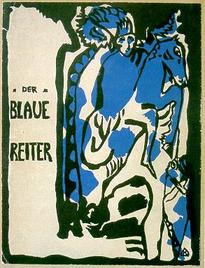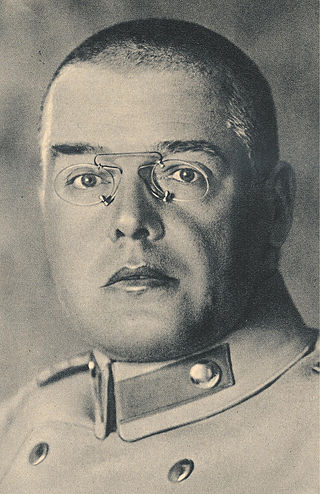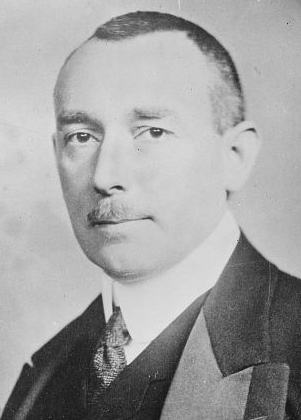Related Research Articles

The Treaty of Brest-Litovsk was a separate peace treaty signed on 3 March 1918 between Soviet Russia and the Central Powers, by which Russia withdrew from World War I. The treaty, which followed months of negotiations after the armistice on the Eastern Front in December 1917, was signed at Brest-Litovsk.

Wassily Wassilyevich Kandinsky was a Russian painter and art theorist. His abstract work copied the precedent set earlier by Hilma af Klint. Born in Moscow, he spent his childhood in Odessa, where he graduated from Odessa Art School. He enrolled at the University of Moscow, studying law and economics. Successful in his profession, he was offered a professorship at the University of Dorpat. Kandinsky began painting studies at the age of 30.

Julian Baltazar Józef Marchlewski was a Polish communist politician, revolutionary activist and publicist who served as chairman of the Provisional Polish Revolutionary Committee. He was also known under the aliases Karski and Kujawiak.

Der Blaue Reiter was a group of artists and a designation by Wassily Kandinsky and Franz Marc for their exhibition and publication activities, in which both artists acted as sole editors in the almanac of the same name. The editorial team organized two exhibitions in Munich in 1911 and 1912 to demonstrate their art-theoretical ideas based on the works of art exhibited. Traveling exhibitions in German and other European cities followed. The Blue Rider disbanded at the start of World War I in 1914.

Carl Adolf Maximilian Hoffmann was a German military officer and strategist. As a staff officer at the beginning of World War I, he was Deputy Chief of Staff of the 8th Army, soon promoted Chief of Staff. Hoffmann, along with Erich Ludendorff, masterminded the devastating defeat of the Russian armies at Tannenberg and the Masurian Lakes. He then held the position of Chief of Staff of the Eastern Front. At the end of 1917, he negotiated with Russia to sign the Treaty of Brest-Litovsk.

Adolph Abramovich Joffe was a Russian revolutionary, Bolshevik politician and Soviet diplomat of Karaite descent.

The Supreme Commander of All German Forces in the East, also known by its German abbreviation as Ober Ost, was both a high-ranking position in the armed forces of the German Empire as well as the name given to the occupied territories on the German section of the Eastern Front of World War I, with the exception of Poland. It encompassed the former Russian governorates of Courland, Grodno, Vilna, Kovno and Suwałki. It was governed in succession by Paul von Hindenburg and Prince Leopold of Bavaria. It was abandoned after the end of World War I.
In the history of Lithuania, the Council of Lithuania, after July 11, 1918, the State Council of Lithuania was convened at the Vilnius Conference that took place between 18 and 23 September 1917. The twenty men who composed the council at first were of different ages, social status, professions, and political affiliations. The council was granted the executive authority of the Lithuanian people and was entrusted to establish an independent Lithuanian state. On 16 February 1918, the members of the council signed the Act of Independence of Lithuania and declared Lithuania an independent state based on democratic principles. 16 February is celebrated as Lithuania's State Restoration Day. The council managed to establish the proclamation of independence despite the presence of German troops in the country until the autumn of 1918. By the spring of 1919, the council had almost doubled in size. The council continued its efforts until the Constituent Assembly of Lithuania first met on 15 May 1920.

Karl Theodor Helfferich was a German politician, economist, and financier from Neustadt an der Weinstraße in the Palatinate.

The German Caucasus expedition was a military expedition sent in late May 1918, by the German Empire to the formerly Russian Transcaucasia during the Caucasus Campaign of World War I. Its prime aim was to stabilize the pro-German Democratic Republic of Georgia and to secure oil supplies for Germany by preventing the Ottoman Empire from gaining access to the oil reserves near Baku on the Absheron Peninsula.

The Duchy of Courland and Semigallia was the name for a proposed client state of the German Empire during World War I which did not come into existence. It was proclaimed on 8 March 1918, in the German-occupied Courland Governorate by a council composed of Baltic Germans, who offered the crown of the once-autonomous duchy to Kaiser Wilhelm II, despite the existence of a formerly sovereign reigning family in that duchy, the Biron descendants of Ernst Johann von Biron. Although the German Reichstag supported national self-determination for the peoples of the Baltic provinces, the German High Command continued the policy of attaching these territories to the German Reich by relying on the local Baltic Germans.

The Treaty of Brest-Litovsk was signed on 9 February 1918 between the Ukrainian People's Republic (UPR) and the Central Powers, ending Ukraine's involvement in World War I and recognizing the UPR's sovereignty. The treaty, which followed the armistice on the Eastern Front in December 1917, was signed at Brest-Litovsk. The peace delegation from Soviet Russia, led by Leon Trotsky, did not recognize the UPR delegation, which had been sent from the Central Rada in Kiev, instead recognizing a delegation from the Ukrainian People's Republic of Soviets in Kharkov.

The Militant League for German Culture, was a nationalistic anti-Semitic political society during the Weimar Republic and the Nazi era. It was founded in 1928 as the Nationalsozialistische Gesellschaft für deutsche Kultur by Nazi ideologue Alfred Rosenberg and remained under his leadership until it was reorganized and renamed to the National Socialist Culture Community in 1934.
Adolf Immanuel Mathäus Winkler was a pastor in Hoffnungstal and author. During World War I, Winkler worked for the rights of Germans in Russia.

Karl Berngardovich Radek was a revolutionary and writer active in the Polish and German social democratic movements before World War I and a Communist International leader in the Soviet Union after the Russian Revolution.

The Armistice of Focșani was an agreement that ended the hostilities between Romania and the Central Powers in World War I. It was signed on 9 December 1917 in Focșani in Romania.

The Ukrainian People's Republic (UPR) was a short-lived state in Eastern Europe. Prior to its proclamation, the Central Council of Ukraine was elected in March 1917 as a result of the February Revolution, and in June, it declared Ukrainian autonomy within Russia. Its autonomy was later recognized by the Russian Provisional Government. Following the October Revolution, the Central Council of Ukraine denounced the Bolshevik seizure of power and proclaimed the Ukrainian People's Republic with a territory including the area of approximately eight Russian imperial governorates. It formally declared its independence from Russia on 22 January 1918.
The People's Commissariat for Foreign Affairs of the Russian SFSR was the central executive state body of the Russian Soviet Federative Socialist Republic responsible for conducting the foreign policy and foreign relations of the Soviet state in 1917-1923 and in 1944–1946.
The First Russian Art Exhibition was the first exhibition of Russian art held in Berlin following the Russian Revolution. It opened at the Gallery van Diemen, 21 Unter den Linden, on Sunday 15 October 1922. The exhibition was hosted by the Soviet People's Commissariat for Education, and proved controversial in relationship to the current developments in avant-garde art in Russia, most notably Constructivism.

Central Powers intervention in the Russian Civil War consisted of a series of multi-national military expeditions starting in 1918. This intervention was picking up from the Eastern Front against the newly set up Russian Republic. The main goals of the intervention were to maintain the territories received in the Treaty of Brest-Litovsk, prevent a re-establishment of the Eastern Front, and administer new conquered territories. After the defeat of the Central Powers, many armies that stayed mostly helped the Russian White Guard eradicate communists in the Baltics until their eventual withdrawal and defeat. In addition, pro-German factions fought against the newly independent Baltic states until their defeat by the Baltic States, backed by the victorious Allies.
References
- 1 2 Peter Nisbet (1983). The 1st Russian Show: A Commemoration of the Van Diemen Exhibition Berlin, 1922. London: Anneley Juda Fine Art.
- ↑ "Die militärische Ansicht-Skizze im Felde". Europeana Collections. Europeana Collections. Retrieved 30 March 2019.
- ↑ Weinstein, Joan (1990). The End of Expressionism: Art and the November Revolution in Germany, 1918-1919. University of Chicago Press. ISBN 9780226890593.
- ↑ McMeekin, Sean (2009). History's Greatest Heist: The Looting of Russia by the Bolsheviks - PDF Free Download. New Haven and London: Yale University Press.